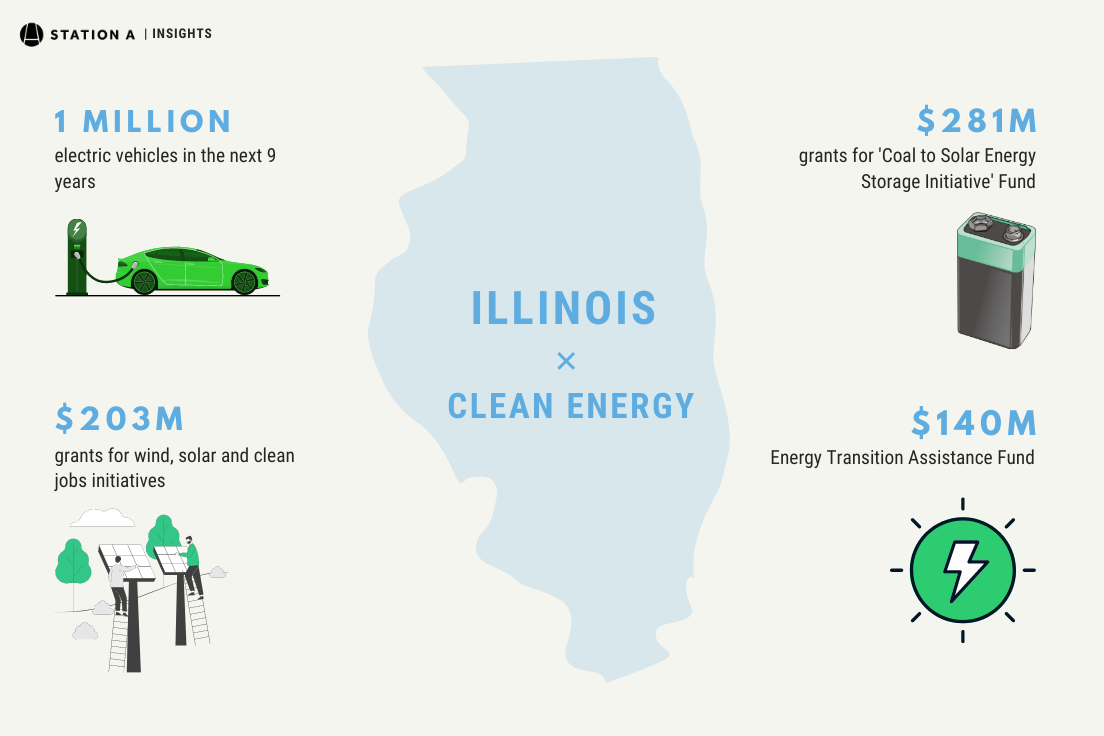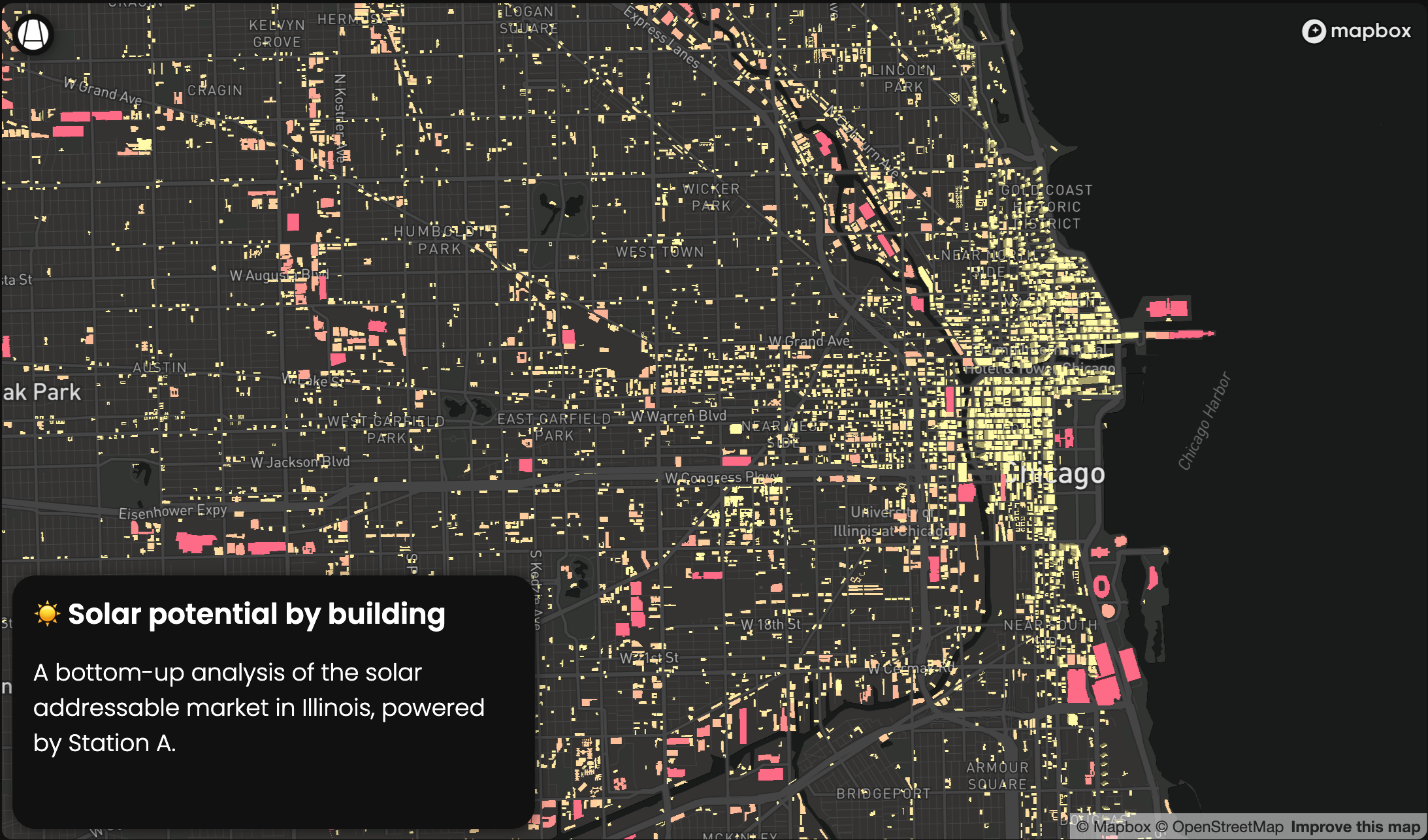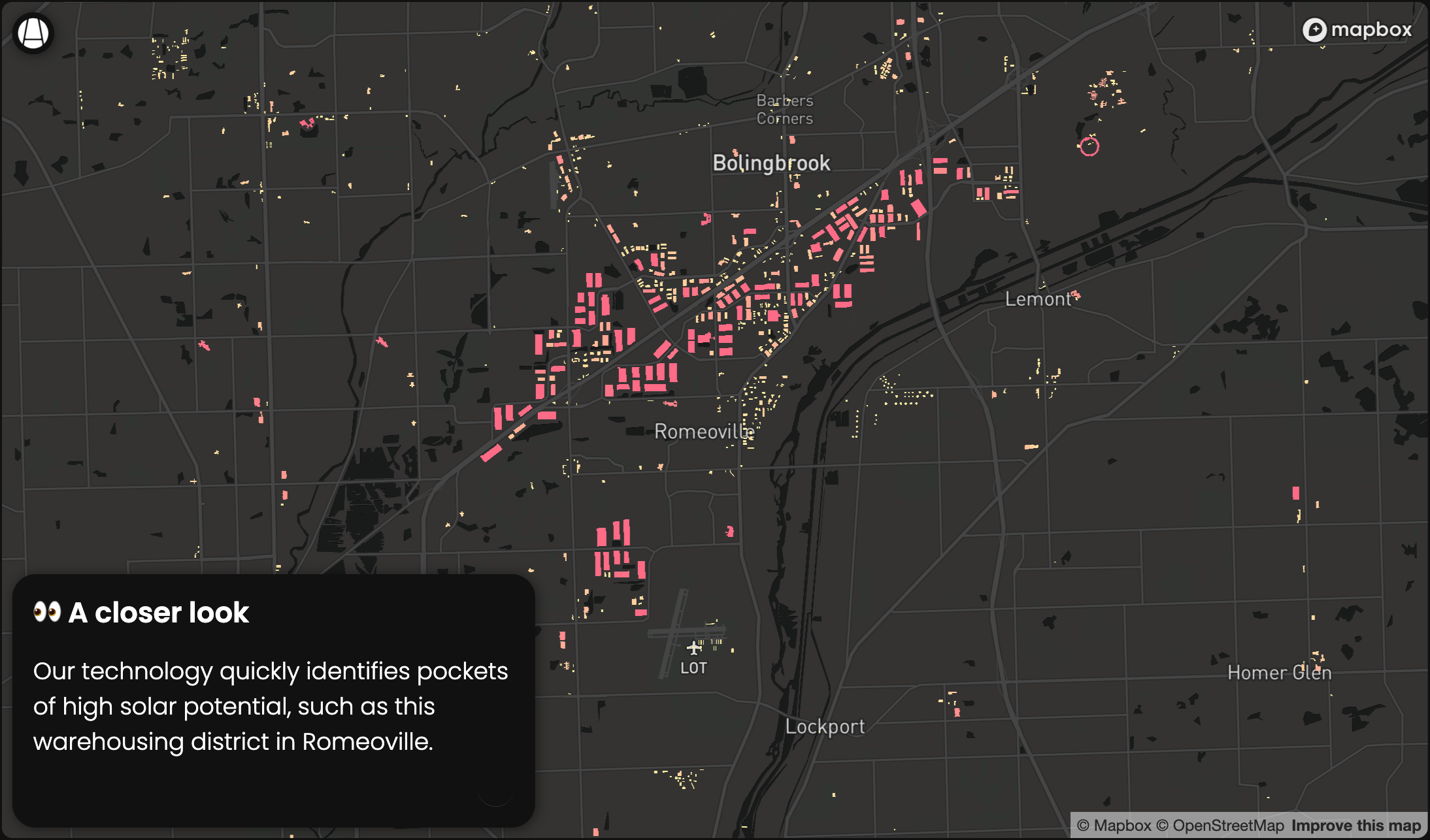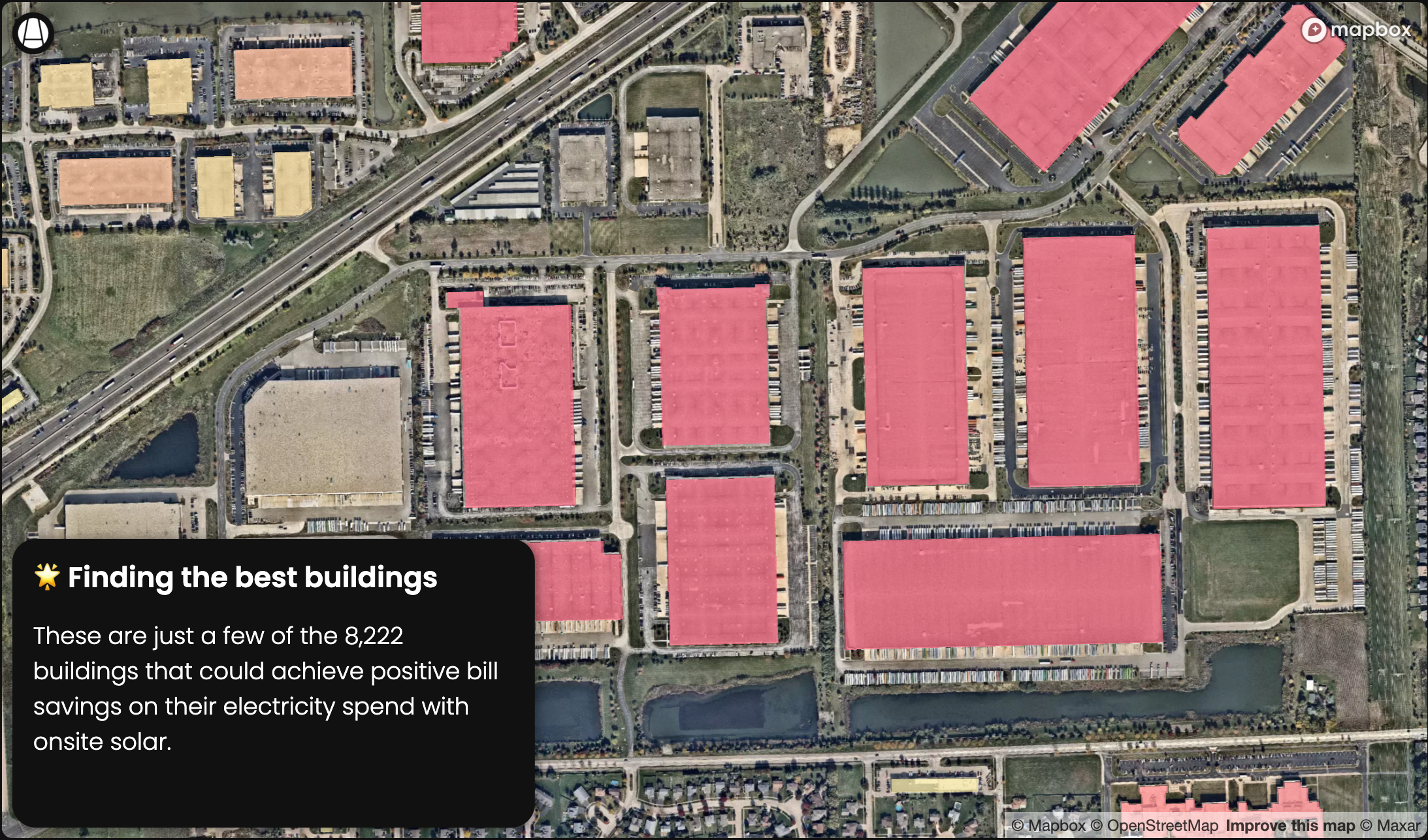📈 Climate Progress in the Prairie State
For over a year Illinois lawmakers and coalition groups have been working to develop a major clean energy bill for the state. Incentive funding for new solar projects that was approved as part of Illinois’ last major energy bill, the 2017 Future Energy Jobs Act, has been depleted. The number of new, small rooftop solar projects in the second quarter of this year was down 90 percent from the same quarter in 2020. Installers testified during a hearing last week that development has been slowed in the state by the delay of the bill.
But good news for clean energy buyers and providers as this week the Illinois legislature passed a massive clean energy omnibus package in a bipartisan vote. The program is ambitious to say the least. The state’s program includes the goal of putting Illinois on a path to 50 percent renewable energy by 2040 and 100 percent carbon-free by 2050 through an increased investment in renewables; a goal of putting 1 million electric vehicles on Illinois roads by 2030 through rebates and incentives; and increasing diversity in the renewable energy job force with training and other assistance through “clean jobs workforce hubs”, among other wide-ranging provisions.
Typically, states like California, New Jersey, and Massachusetts have provided robust clean energy incentives, but with the passage of this new legislation, the Prairie State may become the new “epicenter of the green economy”.
🧑🏽🤝🧑🏼 Community Solar
Under this bill there will be a big community solar opportunity starting in 2023. Community solar is a large, central solar power plant, whose electricity is shared by more than a single building. Community solar customers can either buy or lease a portion of the solar panels in the array, and they typically receive an electric bill credit for electricity generated by their share of the community solar system—similar to someone who has rooftop panels installed on their home. Community solar can be a great option for building owners or tenants who are unable to install solar panels on their roofs because they have insufficient solar resources or roof conditions to support a rooftop PV system due to shading, roof size, or other factors. Community solar spreads the benefits of ownership of solar across the community and has been very successful in neighboring Minnesota reaching 811 MW of operating capacity as of this August. The community solar program in Illinois will likely be dominated by big greenfield projects in open spaces proximal to densely populated urban and commercial corridors. The current community solar program is fully subscribed, demonstrating the popularity of this program to date.
🧠 Incentives make Onsite Solar a “No-Brainer”
The bill also includes provisions for the next Illinois Solar Renewable Energy Credit (SREC). Illinois SRECs help the state meet Renewable Portfolio Standards (RPS), which is a regulatory mandate that sets goals for generating a percentage of Illinois’ overall electricity from renewable energy. Based on current discussions, the 15-year REC contract will potentially be valued at approx $40/MWh and it is likely to increase to further incentivize development and to account for increases in the prevailing wage.
Between the 26% federal tax credit and the SREC incentive, more than 60% of a solar system could be paid for from these two incentives alone.
There is also one other incentive being offered by utilities, who provide a rebate of up to $250/kwDC upfront for installing a smart inverter. You can learn more about this program here.
☀️ The Addressable Market for Solar
As the solar market in Illinois ramps up again where exactly is the potential for rooftop solar? Using the Station A Platform we were able to produce a bottom-up analysis of the solar potential in the state by building. Our results indicate that there are 8,222 non-residential buildings in the state of Illinois that could achieve positive bill savings on their electricity spend with onsite solar.
The total potential of these buildings equates to 5.9 GW of solar power and an annual savings potential on the order of $385 MM for the Illinois economy.
Data from Wood Mackenzie shows that the cumulative solar capacity (MWdc) installed in IL through Q2 2021 was 381.5 MW of non-residential and community solar. These numbers support the SEIA estimate that the solar market in Illinois is projected to grow by 1,700% over the next 5 years!
🔭 What’s Next
This historic and comprehensive energy bill certainly paves the way for significant emissions reductions and a wave of new green jobs in the state. For energy buyers and providers alike the coming opportunities in Illinois are exciting and signal progress to combat climate change in the country’s sixth largest state.
If you are an energy buyer and you’d like to evaluate your buildings for clean energy, download our free guide to start your journey. If you need help along the way, you can always reach us at buyers@stationa.com.
If you are an energy provider, sign up to join our growing provider network and receive notifications of upcoming projects in the Station A Marketplace.




